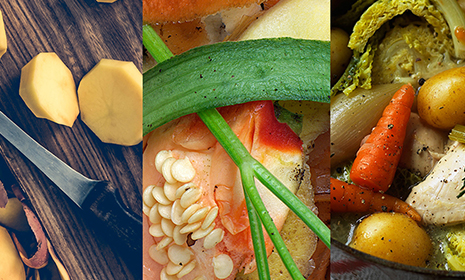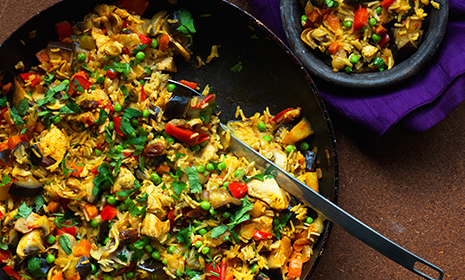
Love your leftovers
We’ve all experienced that particular type of guilt that comes from wasting food.
It’s a common sight in many of our kitchens… a loaf’s gone stale, fresh greens have wilted, eggs are past their best, carrot peelings are forgotten, chicken bones are binned after a roast.
Food waste occurs each and every day and, although it may seem harmless and only occurs in our homes on a small scale, it can add up to a surprising amount of food – and money – over time.
Why do we waste food?
Generally, it’s not something we do on purpose – or, indeed, feel comfortable with. The main reasons which contribute to food ending up in our bins are that it was left on the plate, that more was cooked than was needed, and that it simply wasn’t used in time.
General tips for reducing your food waste:
- Take stock of what’s lurking in the back of cupboards and in the fridge. Note upcoming expiration dates and plan meals around these.
- First come, first served – just bought new groceries? Make sure you put them to the back of the fridge or cupboard so that older ingredients get used first.
- Keep an eye of what’s being thrown away – if you’re chucking out half a loaf each week, perhaps freeze half of it on the day of purchase, or buy a smaller version.
- Use that extra food – leftovers can often be frozen, used as work or school packed lunches, or eaten the following day for dinner.
- Supermarkets and shops will generally place items with the shortest ‘best before’ or ‘use by’ dates at the front of the shelves – check further back for produce and ingredients that will last longer.
Making the most of common leftovers:
- Where possible, use every part of the ingredient. Leave the skins on cucumbers, carrots and potatoes, and sauté broccoli stems along with the florets. Stems and skins offer added nutrients, too.
- Use vegetable and meat scraps in homemade stocks or add them to stews, casseroles, and dishes like shepherd’s pie.
- Citrus fruit rinds and zest add flavour to other dishes.
- Make smoothies from soft fruit, turn wilting veg into soup, and use both fruit and veg that’s seen better days in nutritious juice.
- Odd bits of dried fruit, seeds, nuts, biscuit crumbs and cereal leftovers can all be used up in a batch of flapjacks.
- Omelettes and frittatas are enhanced by leftover veg, cheese of all varieties, and offcuts of bacon, ham and smoked fish.
- Past-their-best fruits and spices can be easily transformed into jams, preserves, compotes, sauces and dressings.

Curries, stews and casseroles are quick and easy to whip up using whatever food you have to hand.
Benefits of loving your leftovers
You'll make your food go further: that overripe banana becomes deliciously indulgent banana bread, leftover meat is transformed into hearty soup, slightly ‘past-it’ veg creates flavoursome hash. One standard meal can help produce a whole week of dishes and snacks, meaning each and every part of an ingredient is used
Thrift comes first: essentially, you save money. By not wasting as much food produce, you don’t need to buy as much, as ingredients keep on giving and putting food on the table for your family
Time is precious, and you'll have more of it: with less time spent pushing trollies around supermarkets due to having more food in the fridge, you can release time to spend outside the kitchen.
Nature will thank you: it’s no secret that it’s better for the environment if food waste is minimised, and you can feel confident that you're contributing to a 'greener' world.
We’ve handpicked some recipes which will work excellently with your common kitchen leftovers...
Dairy
Creamy bacon and rosemary pasta
Vegetables
Bread
Meat
Fish
Fruit
